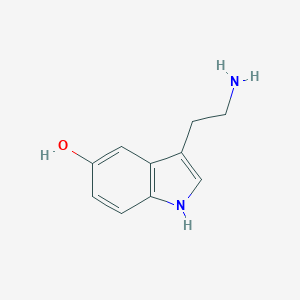|
Serotonin is a biochemical messenger and regulator, synthesized from the essential amino acid L-Tryptophan. Serotonin in the nervous system acts as a local transmitter at synapses, and as a paracrine or hormonal modulator of circuits upon diffusion, allowing a wide variety of "state-dependent" behavioral responses to different stimuli. Serotonin is widely distributed in the nervous system of vertebrates and invertebrates and some of its behavioral effects have been preserved along evolution. Such is the case of aggressive behavior and rhythmic motor patterns , including those responsible for feeding. In vertebrates, which display a wider and much more sophisticated behavioral repertoire, serotonin also modulates sleep, the arousal state , sexual behavior, and others, and deficiencies of the serotonergic system causes disorders such as depression, obsessive-compulsive disorder, phobias, posttraumatic stress disorder, epilepsy, and generalized anxiety disorder. Serotonin has three different modes of action in the nervous system: as transmitter, acting locally at synaptic boutons; upon diffusion at a distance from its release sites, producing paracrine (also called volume) effects, and by circulating in the blood stream, producing hormonal effects. The three modes can affect a single neuronal circuit. Serotonin is also a microbial metabolite, urinary serotonin is produced by Candida, Streptococcus, Escherichia, and Enterococcus.
|
 click to show the details of this protein
click to show the details of this protein
 click to show the details of experiment for validating this pair
click to show the details of experiment for validating this pair
 click to show the details of this protein
click to show the details of this protein
 click to show the details of experiment for validating this pair
click to show the details of experiment for validating this pair
 click to show the details of this protein
click to show the details of this protein
 click to show the details of experiment for validating this pair
click to show the details of experiment for validating this pair

